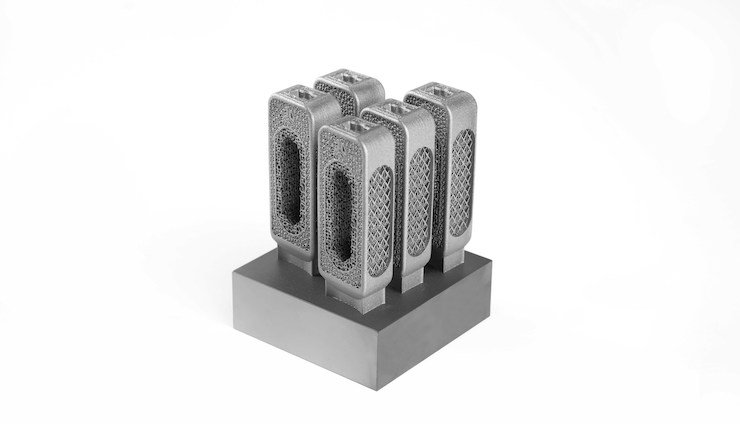2020/06/08 10:20 | Pageview:1415 | From: tctmagazine

3D printed spinal cages.
The next time you find yourself doubting 3D printing’s potential for production, just think of this figure: 1 million. That is the number, according to 3D Systems, of certified medical implants it has 3D printed for human beings around the world. How they got to that number is all about workflow, and that workflow, is down to collaboration.
3D Systems partnered with precision machining specialist GF Machining back in 2018 to deliver a new automation concept for complex metal parts. At the most recent Formnext trade show, the companies demonstrated the results of this integrated workflow for a series of titanium spinal cage implants.
Discussing the partnership, Mark Cook, Vice President, Metals Products at 3D Systems, told TCT how the company worked with GF to address the requirements of the manufacturing floor: “Teaming up with GF was critical for us to take that next step and really help customers develop more efficient ways to bring additive into the serial production environment.”
Different applications require different solutions, and medical devices, naturally, come with additional challenges around certification. For spinal cages, which 3D Systems is said to be producing 500,000 of annually, the parts are designed, prepared and optimised in 3DXpert software and then sent for printing in the DMP Flex 350, which features quick swap build modules for continuous production. The parts can then go straight to the CNC machining centre to begin post-processing.
While all applications are different, the common thread is a need to understand each workflow from the outset to maximise efficiency and incorporate all post-processing functions, as Romain Dubreuil, Product Line Manager at GF Machining, explained: “Where there are still a lot of manual operations, the vision in the future is […] going to production in series where the complete manufacturing chain is optimised.”
Applying its 65 plus years of experience, GF says it is working with 3D Systems at R&D level to further simplify AM integration into the full manufacturing process chain for steps such as milling and CNC machining. But is post-processing really as much of a bottleneck as once thought?
Cook says, in the case of metals, post-processing is little more than a required downstream operation. “Even in traditional manufacturing, you typically never put a piece of material into a CNC machine and get the final part out,” he suggests, adding that post-processing steps need to be considered as part of the overall production workflow to make it as efficient as possible.
Gautam Gupta, VP, Business Development, Healthcare at 3D Systems, however, says metal printing does come with its own unique post-processing challenges, even just to remove the parts from the build plate. He described how previously it had been difficult to position the build in a way that would allow for wire EDM. To solve that, GF introduced the AgieCharmilles CUT AM 500, specifically designed for AM, which allows efficient separation of parts up to 510 x 510 x 510 mm, from the build plate without any damage.
Gupta explained: “Now instead of you having to turn the plate 90-degrees and get the wire somehow aligned, you can just keep the plate as you printed it, keep all the data intact and let the wire come in horizontally. It seems very trivial and simple, but it has created a huge impact on how we can process the implant.”
3D Systems is also leveraging additional solutions from GF including a System 3R clamping mechanism which allows easier integration and accurate positioning of the build platform with secondary processes.
Cook says they’re only just scratching the surface and as the partnership progresses there is scope to further streamline the entire process from putting powder into the system to getting your final part in hand.
He added: “It's really much more about designing equipment with the entire process comprehended at the beginning [..] we're starting to develop concepts that are based on accomplishing that goal four or five years down the road.”
